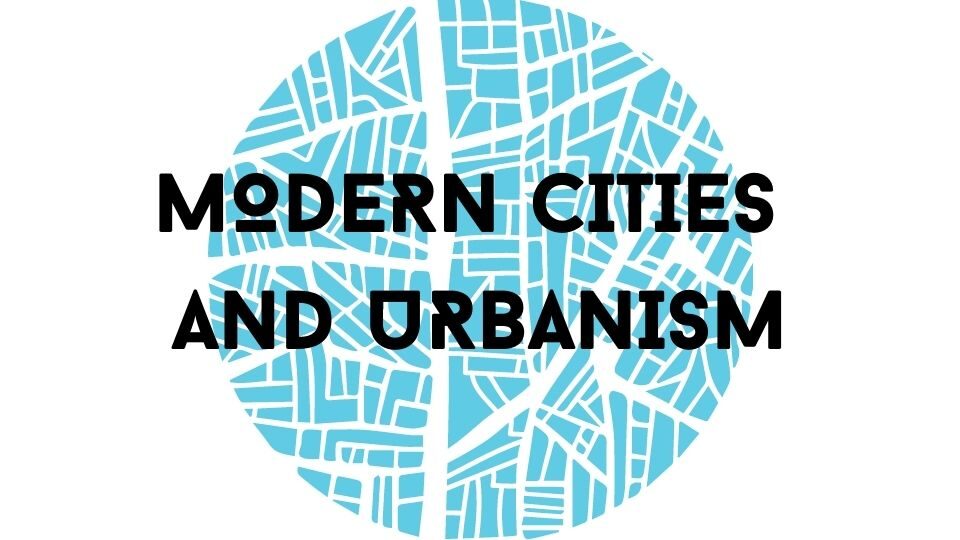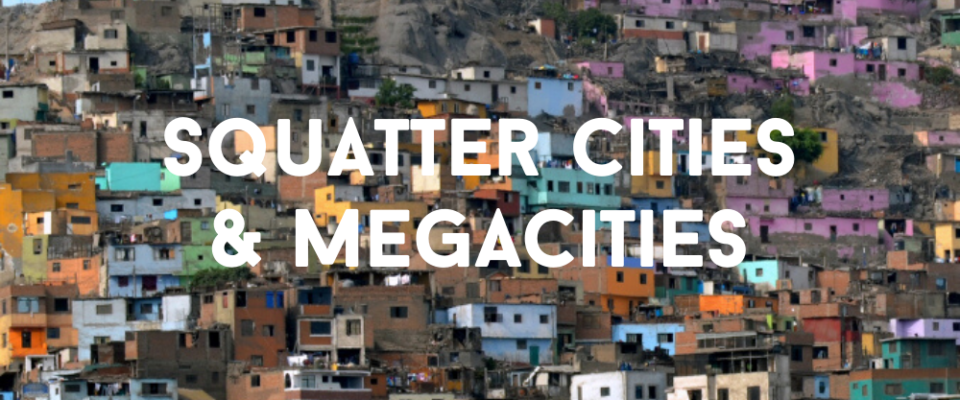Questions
Where do the poorest residents live in Xi’an?
How did they get there?
Are there or were there in the past districts of housing built by the occupants themselves?
Shantytowns and Urban Villages in Xi’an
Reflecting upon China’s path of modernization and comparing Chinese cities with foreign ones, Chinese scholars and media pundits have concluded that China offers a model of development without slums (Liu and Zhang 2020). Organizations such as the World Bank, however, estimate that 24.6% of Chinese urban residents reside in slums. To resolve these conflictual accounts, the research begins with villages in the city (VICs), a special and ubiquitous type of settlement that shares many features with slums found in other developing countries but remains distinct in their history, legal, and social status, and population composition. The papers reviewed this week provide detailed accounts on VICs in Xi’an from different perspectives, shedding light on the debate regarding China’s urbanization experience.
As one of the first Chinese cities to reach a population of 1 million residents, Xi’an has a long history of dealing with urban poverty and social stratification. During the Tang Dynasty, destitute people and beggars drifted into Chang’an in large numbers. Many of them had no formal residence and took up temporary shelters on the street until the court banned all beggars in 734 and relocated them to special wards for the sick (Lewis 2009, 92). Although much of urban history in Xi’an was not well analyzed for the next 1200 years, subsequent dynasties only loosened controls over urban population, allowing greater freedom of migration especially in outer cities (Sit 2010, 175). In the Republican Era, the large inflow of rural population into urban centers led to the growth of shantytowns (棚户区) across Chinese cities, with a heavy concentration in Nanjing (Long 2018, 82).
After the founding of the People’s Republic of China in 1949, urbanization in China took on a very different form. The nationalization of urban land and strict household registration (户口) system designed to control and limit domestic migration largely prevent the spawning of illegal or unregulated settlements in Chinese cities. Until the 1980s and early 1990s, urban space in China was highly regulated by the government through the danwei system. The state provided housing for most urban residents, and privately-built housing units were extremely rare, save historical architectures preserved within the Xi’an city walls (Li 2019, 32-36).
Following China’s economic reform launched in 1978, modernization and urbanization led to rapid urban expansions in China. In less than four decades, Xi’an more than quadrupled its size and almost tripled its population. Naturally, how to incorporate rural farmlands became a new task for the municipal government in Xi’an. The dual-track land ownership system established in China—the government owns urban spaces and gives residents 70 years of property rights whereas rural lands are collectively owned by farmers—means the government cannot legally take away farmlands (Liu and Zhang 2020). In most scenarios in Xi’an, however, expropriation was carried out without major obstacles, but incorporating rural villages and market towns proved more difficult and time-consuming. Given the rapid rate of urban expansion, many villagers in suburbs saw their surroundings transformed from paddy fields to roads and high-rises within years (De Meulder and Shannon 2014, 5-14).
Then sudden forced urbanization brought urban villagers in Xi’an a new reality as if they were teleported into a new world that bears little resemblance with their experience. It displaced them from their ancestral lands, took away their only source of income, but also presented them with new, and more profitable economic opportunities (Liu et al 2010, 135-136). With the compensations they received from the government, many urban villagers opened convenient stores, restaurants, and hair salons servicing each other and middle-class citizens in nearby neighborhoods. Many more became landlords for migrant workers flooding into Xi’an and students from nearby universities seeking affordable housing options (Liu et al 2010, 136). Many urban villages thus evolved into shelters for those with meager economic means and open, heterogenous communities with diverse and vibrant cultures (Wang and Li 2014, 150).
These developments reinforced the status of VICs as communities that are “neither urban nor rural” (Tang 2015, 724-744). Though geographically urban, most VICs have retained their rural social fabrics. Whereas social capital and place attachment are vanishing quickly in urban neighborhoods, social networks remain strong among VICs residents and newcomers to these communities (Wang and Li 2014, 150). In terms of governance structure, although most VICs are incorporated into urban resident committees, most internal affairs still exhibit strong characteristics of self-governance that one typically finds in Chinese villages (Liu et al 2010, 138-140). More importantly, urban villages in Xi’an are cultural melting pots where modernity is reinterpreted inside these crowded, often unaesthetic and scruffy, alleys and shopping malls.
Although state media have often described urban villages as “safe” and “livable” (People’s Daily, 2019), in reality, the living conditions in many VICs share features with urban slums. Increasing demand for housing from migrant workers and poor white-collar employees has encouraged many urban villagers to add additional—and in most cases illegal—floors to create more supply (Zhang and Wang 2003, 16). Most buildings started out with two stories and have grown to six-story tall. As most of these informal structures are built without professional planning or city approval, they pose a serious fire hazard to the entire neighborhood.
The Xi’an government also views these VICs as the root of urban poverty and stains on the beauty of the city (Zhang, Zhao, and Tian 2003, 913-914). In response, the state has implemented two strategies—demolition and redevelopment. Since the early 2000s, the municipal government in Xi’an has demolished over 100 VICs in the city, compensating villagers based on the size of their settlements, relocating them to new apartment buildings, and leasing the land to developers to build fancy neighborhoods, commercial districts, or office buildings. The second strategy, best exemplified by the redevelopment of Ganjiazhai Village, was completed in 2012. As clean, red-brick buildings arranged in an orderly fashion replaced the old gray, shabby architectures, Ganjiazhai was praised as the model of VICs redevelopment and a successful case of integrating urban villages into the city (National Business Daily, 2018). Subsequent development of Ganjiazhai, however, did not follow the government’s blueprint. Villagers, seeing greater profits in renting out apartments to migrant workers, went back to their old playbooks and began constructing additional floors without government approval (National Business Daily, 2018).
When Chinese scholars explain the key differences between VICs and slums in other developing countries, they focus largely on the legal status of residents’ settlements, the different levels of infrastructure and government service provision, and the fact that most tenants in urban villages have jobs outside the villages. The paper reviewed this week revealed another important distinction—integration. Although VICs in Xi’an are also a part of the story of social and economic stratification in China, they also embody the integration between the two separate worlds in the country. Where migrant workers find their heaven from the daunting, unfamiliar modernity, middle-class urban dwellers in Xi’an find cheap merchandise, genuine human touches, and rich culture in these unkempt alleys (Wang and Li 2014, 150). Such a sentiment is best captured by television series that romanticize urban villages in Xi’an, including The Love Tale of Shajin Village (2012) and Settling the Stage (2020). Unlike the walled commercial residential neighborhoods where neighbors do not know each other’s names, the open and diverse community of urban villages represents an enchanting, lively society full of passion, emotion, and energy.
As China promotes the slogan of “common prosperity” and urban governments seek to eradicate urban poverty and disorderliness, urban villages will soon fade into history in Xi’an and many other cities in China. Reflecting on the long history of Xi’an, one questions whether informal settlements will disappear in China completely. Even within the regimented city of Chang’an, beggars without formal residences gathered on the streets, and much of China’s urban history has been one of economic stratification. Although beggar no longer constitutes a major problem for Xi’an, migrant workers will continue to search for affordable housing options, and given the unforgivingly high housing market price in urban China, many, if not most, will be forced to settle for illegal and informal solutions (Qing 2012, 195-199). Informal structures in China, whether one calls them slums or not, are fundamentally tied to China’s urbanization experience and rapid economic growth (Zhang, Zhao, and Tian 2003, 912). The prevalence of informal housing is in many ways inseparable from the pursuit of prosperity.
Bibliography
De Meulder, Bruno and Kelly Shannon. “Village in the City as Urbanism in China and Elsewhere.” In Village in the City, edited by Bruno De Meulder and Kelly Shannon, 4-15. Zurich: Park Books, 2014.
Lewis, Mark E. China’s Cosmopolitan Empire: The Tang Dynasty. Cambridge: Harvard University Press, 2009.
Li, Leah Cheung Ah. Where the Past Meets the Future: The Politics of Heritage in Xi’an. Münster, Zürich: Lit-Verlag, 2019.
Liu, Shouying and Zhang Yue. “Cities without Slums? China’s Land Regime and Dual-Track Urbanization.” Cities 101 (2020): 1-13.
Liu, Yuting, Shenjing He, Fulong Wu, Chris Webster. “Urban Villages under China’s Rapid Urbanization: Unregulated Assets and Transitional Neighbourhoods.” Habitat International 34, no. 2 (2010): 135-144.
Long, Tiangui. “Shanty Town Problem and Government Solutions in Republican China.” Journal of Shanxi Normal University 45, no. 2 (2018): 82-86.
National Business Daily. “The End of Ganjiazhai Village?” August 23, 2018. http://www.nbd.com.cn/rss/toutiao/articles/1248313.html.
People’s Daily. “Why is China Slum-free?” November 22, 2019. http://en.people.cn/n3/2019/1122/c90000-9634534.html.
Qin, Hui. “Housing Rights of the New Urban Poor.” Tribune of Social Sciences 19, no. 1 (2012): 195-219.
Sit, Victor F. S. Chinese Cities and Urbanism: Evolution and Development. New Jersey: World Scientific, 2010.
Tang, Beibei. “‘Not Rural but Not Urban’: Community Governance in China’s Urban Villages.” The China Quarterly 223 (2015): 724-744.
Wang, Li and Li Jiuquan. “The Spatial Deprivation of the Floating Population in the Transformation of Urban Villages in Xi’an City.” Areal Research and Development 33, no. 4 (2014): 148-152.
Zhang, Chi and Wang Furong. “The Countermeasures about Urbanization of Villages in Cities.” Journal of Xi’an University of Architecture and Technology 22, no. 3 (2003): 15-18.


One Reply to “Xi’an: Squatter Cities, Peasant Cities, Megacities”
Comments are closed.